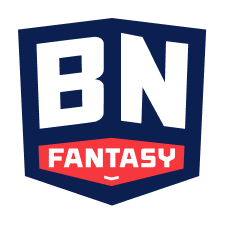All U.S. sportsbooks default to what we call "American odds" — which are centered around winning or risking $100.
Any odds with a minus sign (like -110) indicate that you must risk more than you'll win — a $110 bet at -110 would win $100. Any betting odds with a plus sign (like +150) means you'll win more than you risked — a $100 bet at +150 wins $150.
If you win a bet, you'll receive the payout, plus your original wager back. So a $100 bet at +150 would return $150 in profit plus your $100 stake back to your account, resulting in a total payout of $250.
You don't need to wager exactly $100 of course– sportsbooks will calculate your total payout automatically no matter what the amount you want to bet. You can also use our betting calculator to familiarize yourself with how it works.
This format is most commonly used in the United States, resulting in many also referring to them as "US Odds". Decimal odds (also known as European odds) and fractional odds are more common around the world. Still confused? Let's dive deeper, as understanding American odds is much easier than it seems.
Betting Odds, Explained
Understanding different odds formats, including American, decimal, and fractional odds, is crucial for making informed betting decisions. Each format has its own advantages and disadvantages, such as the ease of calculating payouts with American odds, especially for $100 wagers, and the effectiveness of fractional odds for determining implied winning probabilities.
How to Read American Odds
American odds are centered around winning or wagering $100 on a given bet, though you don’t need to actually wager $100. That's just a handy way of scaling the value up and down depending on your bet amount. Understanding how to convert American odds to decimal and fractional odds is crucial for bettors.
- If You’re Betting a Favorite: The betting odds for favorites will have a minus (-) sign in front, and indicate the money you need to risk to win $100.
So if you’re betting on the Yankees at -130, you need to risk $130 and will win $100 if New York wins the game (plus your original $130 back).
- If You’re Betting an Underdog: The betting odds for underdogs will have a plus (+) sign in front, and indicate the money you’ll win for every $100 risked.
So if you’re betting the Red Sox at +120, you’ll risk $100 and will win $120 if Boston wins the game (plus your original $100 back). American odds can be translated into implied probability to reflect a team's chances of winning.
It might be easier to think in terms of dollars instead of $100's, so for every $1.30 risked on the Yankees in this game, you'd win $1, and for every $1 risked on the Red Sox, you'd win $1.20. You can explore this concept further by using the BetMGM bonus code to try it out.
American Odds in Spreads vs. Moneylines
When you're trying to bet on sports, you'll see American odds everywhere.
But there are two different ways they're used:
- On their own, like for a moneyline (which just requires you to pick the winner of the game). Moneyline odds refer to a straightforward betting method where the focus is solely on which team will win, without considering any point spreads.
- With a point spread or another line like an over/under. The team you bet still needs to cover the spread, but the American odds indicate how much you need to risk for that bet.

Ohio State is the perceived stronger team in this game, so the Buckeyes are the favorite at DraftKings. Based on these odds, Ohio State is expected to win about 70% of the time.
To bet Ohio State -250 to win, you’ll have to risk $2.5 for every $1 you want to win. Remember, OSU just needs to win the game. Positive odds (e.g., +300) indicate how much profit you make on a $100 bet, while negative odds (e.g., -300) show how much you need to bet to win $100.
If you’re betting on Penn State at +200, you’ll win $2 for every $1 risked if they win.
Since the moneyline just requires you to pick a winner, we only need the odds. We won't see a point spread or line of any kind.
American odds next to a point spread or over/under

The second way American odds are used is next to a corresponding line, like a point spread or over/under.
American odds are typically centered around a standard wager of $100, making it easier for bettors to understand the odds format used in U.S. sportsbooks.
The odds dictate how much you have to risk, but not what needs to happen for you to win the bet.
You only have to risk $1.10 for every $1 you want to win when betting Ohio State -6.5 at -110, but they have to win the game by at least 7 points.
Same goes for Penn State +6.5 at -110: you’re only risking $1.10 for every $1 you want to win. If the Nittany Lions lose by 1-6 points or win the game, you win your bet.
Most of the time, football and basketball spreads will be -110 – just a 10% tax on your bet – since spread bets give the underdog an equal chance to cover even if they don't win.
For lower-scoring sports, the point spreads will be low (often -1.5) but the odds on each side will be different because it's harder for a baseball, soccer or hockey team to win by multiple goals.
For example, you could get paid +150 betting Yankees -1.5 against the Red Sox, and have to risk -200 for Red Sox +1.5 in that same game.
Make sure to enhance your betting strategies by using welcome offers such as the Fanatics Sportsbook promo or the Caesars Sportsbook promo code. An exciting new sportsbook has entered the market as well — theScore Bet. Keep track of updates regarding theScore Bet's sportsbook offering by reading our theScore Bet promo code and review.
Fractional & Decimal Odds
Around the world, most sportsbooks and bettors use decimal odds or fractional odds. Here’s how they work.
Decimal odds: Your total return for every dollar risked (including that dollar). Anything above 2.0 means that team or player is plus-money; anything below 2.0 and they’re minus money.
So if the Jets are 2.5 on the moneyline against the Bills, you’d return $2.50 for every dollar wagered, a profit of $1.5 (because that original $1 was included in your return).
In American odds, that’s +150.
If the Bills are 1.5, you’d return $1.50 for every $1 wagered, a profit of 50 cents.
That’s -200 in American odds.
Fractional odds: Fractional odds are still used in horse racing, so they’re not totally unusual to American bettors.
These are pretty straight forward. Divide the fraction into a number, then multiple by your bet amount.
- Bucs 13/2 to win the Super Bowl: 13/2 is 6.5, so every $1 risked wins $6.50.
- Ravens 20/1 to win the Super Bowl: $1 risked wins $20
When it comes to NFL betting, we have you covered with a number of resources, such as NFL Odds, NFL Futures, NFL Picks, NFL ATS Standings, NFL Props, NFL Props Picks, and Touchdown Props!
Why Do I Have to Risk More on The Favorite Than I'll Win on the Underdog?
Risking $2.5 for every $1 you want to win on Ohio State seems unfair when you’d only get paid $2 for every $1 you want to risk on Penn State.
Sports bettors can quickly calculate implied winning probabilities using American odds, emphasizing the importance of understanding these odds for effective online sports betting.
This gap in odds is what’s called juice or vigorish – it’s essentially the tax a sportsbook charges for taking your action.
Over thousands of bets, this tax adds up and makes it difficult for most bettors to become gainful– the house needs to pay the bills.
Over thousands of bets, this tax adds up and makes it difficult for most bettors to become gainful.
If you want to bet wisely on college football, here are a few of our recommended resources:
- College Football Betting Tips for Profitability
- College Football Betting Tips on Fading the Public
- Check out our expert team with College Football Picks and real-time College Football Odds
How To Calculate My Bet With American Odds
The basic formulas vary slightly depending on if you’re betting a favorite or an underdog.
There are two ways to calculate each – based on either how much you want to wager or how much you want to win.
Favorite Method No. 1: The first method is calculating how much you want to win.
Let’s say you want to win $25 betting on the Yankees at -130 – you’re willing to risk a little more money to get the $25.
Enter $25 as the win amount and -130 as the moneyline into the following formula. You’ll arrive at $32.50, meaning you need to risk that much to win $25.
Win Amount ((-1 Moneyline) / 100)
$25 * (130/100) = $32.50
Favorite Method No. 2: The second method is calculating how much you will win if you wager a certain amount. Let’s say you’re only comfortable wagering $25 on the Yankees at -130, knowing you’ll profit a little less if they win.
Enter $25 as the win amount and -130 as the moneyline into the following formula. You’ll arrive at $19.23.
Wager Amount ((100/(Moneyline -1))
$25 (100 / (-130 -1)) = $19.23
Underdog Method No. 1: There are similarly two options for underdogs. The first is calculating how much you want to win based on a set bet amount.
Let’s say you want to bet $40 on Tony Ferguson. Enter $40 and +230 into the following formula.
Wager * (Moneyline / 100)
$40 x (230 / 100) = $92
Underdog Method No. 2: The second option is calculating how much you need to bet to win a certain amount.
If you want to win $100 on Ferguson when his moneyline is +230, you would do the following and arrive at a $43.48 bet:
Win Amount / (Moneyline / 100)
$100 / (230 / 100) = $43.48
The latest state to legalize online betting is North Carolina: learn more by checking out our BetMGM North Carolina bonus code and the FanDuel North Carolina promo code.
Stay up to date and keep track of all of the states with legal sports betting to see what the status of legal mobile sports betting is in your location.
Frequently Asked Questions on American Betting Odds
Below are a few commonly asked questions surrounding American odds in sports betting.
What are American odds?
American odds are a betting format that uses plus (+) and minus (-) signs to represent potential payouts and implied probability. Favorites are denoted with a minus sign, indicating how much you must bet to win $100 (e.g., -150 means betting $150 to win $100). Underdog odds are accompanied by a plus sign, showing how much you'll win on a $100 bet (e.g., +200 means winning $200 on a $100 wager).
How do you read American betting odds?
Reading American sports betting odds involves understanding the plus and minus signs that indicate potential payouts. For favorites, a minus sign next to the number (e.g., -150) shows how much you need to bet to win $100; in this case, you'd bet $150 to win $100.
For underdogs, a plus sign next to the number (e.g., +200) indicates how much you would win on a $100 bet; here, a $100 wager would yield a $200 profit. The higher the absolute value of the odds, the stronger the favorite or the larger the underdog.
How do you convert American odds to decimal odds?
Converting American odds to decimal odds is a straightforward process that depends on whether the American odds represent a favorite or an underdog. For underdog odds, use the formula: (American odds / 100) + 1. For example, +150 would convert to 2.50 in decimal odds. For favorites, use the formula: (100 / American odds) + 1. In this case, -200 would convert to 1.50 in decimal odds.
How can I convert American odds to implied probability?
Converting American betting odds to implied probability involves different formulas for favorites and underdogs. For underdogs, use the formula: 100 / (odds + 100). For example, +200 would convert to an implied probability of 33.33%. For favorites, use: odds / (odds + 100). So, -150 would convert to an implied probability of 60%.
























































